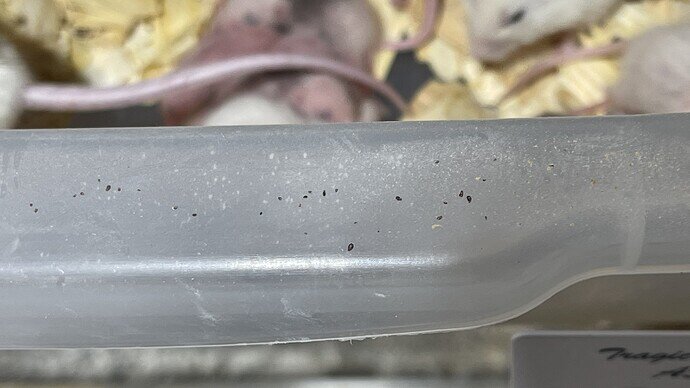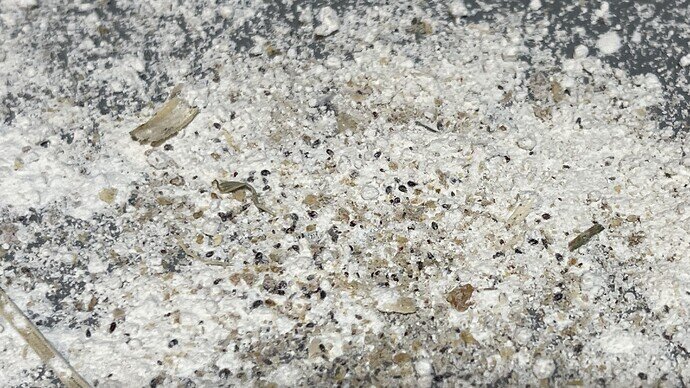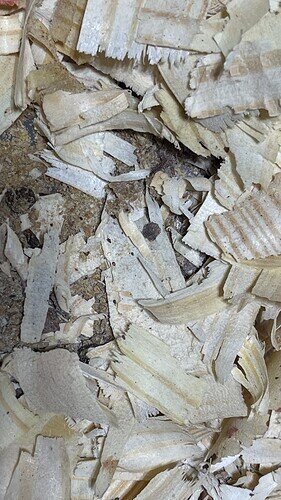I figured I would add this here incase anyone searching finds this thread one day:
I have decided against introducing the permethrin cotton balls for now. I’ve gone with the following to try to slowly eradicate them with a lot larger safety margin (over the unknown) and a bit more work:
I’ve treated the rim and the lip with permethrin, an area the mites have to travel to get into or out of the tub, and an area the rodents have near zero contact with. (Everyone is in a FB rack) Treatment was with 0.5% permethrin wiped onto the rim and lip with a cotton ball, three times, while allowed to dry in-between applications (~10 minutes). This was done outside to protect all animals and people from the vapor.
With fresh tubs, a small amount of bedding was added (~1") , and about 1/8th of a cup of food grade DE (Diatomaceous Earth) was sprinkled on top. These tubs were swapped with the currently infested ones, all cage extras were either soaked in hot water with a little Dawn in it for about 30 minutes, baked in the oven for 30 min at about 150-170ish, or tossed. Both the baking and the soaking seemed to kill all mites visually (and checked with a 10x scope).
Following this, there were no more mites visible on the outside of the tubs, and a large number of dead mites on the rim. Inside the tubs all the rodents seem content, though there is a fair number of mites visible in the bedding which detached from themselves after the transfer.
I’m currently running a air purifier to try to keep the dust levels (from the DE) down, but given that they are in tubs, and close to the bedding, I’m not sure how much it will help protect them. I’m keeping a close eye out for any level of distress. I’m waiting to see how effective the DE is at killing the mites in the bottom of the tub to evaluate if it’s helpful.
The next steps will be to start switching out tubs every 3 days, and attempt to isolate then remove all remaining mites without giving them a chance to reproduce. As it appears the Tropical Rat Mites are similar to Snake Mites, in that they have decent periods of time detached, including during egg laying, I’m hopeful that 60 days, this issue will be resolved.


